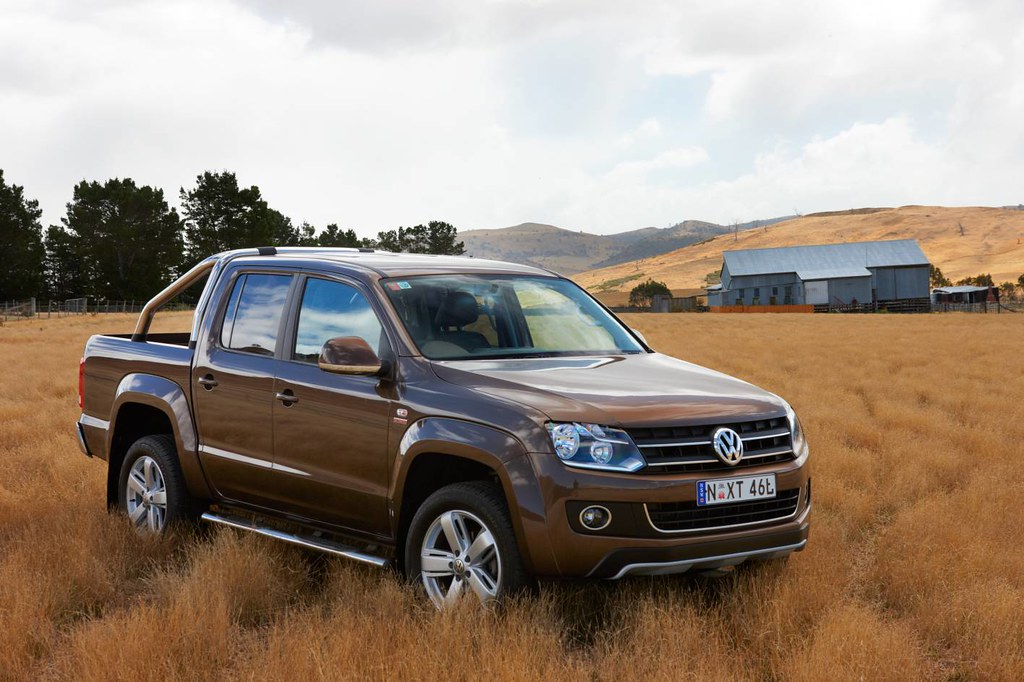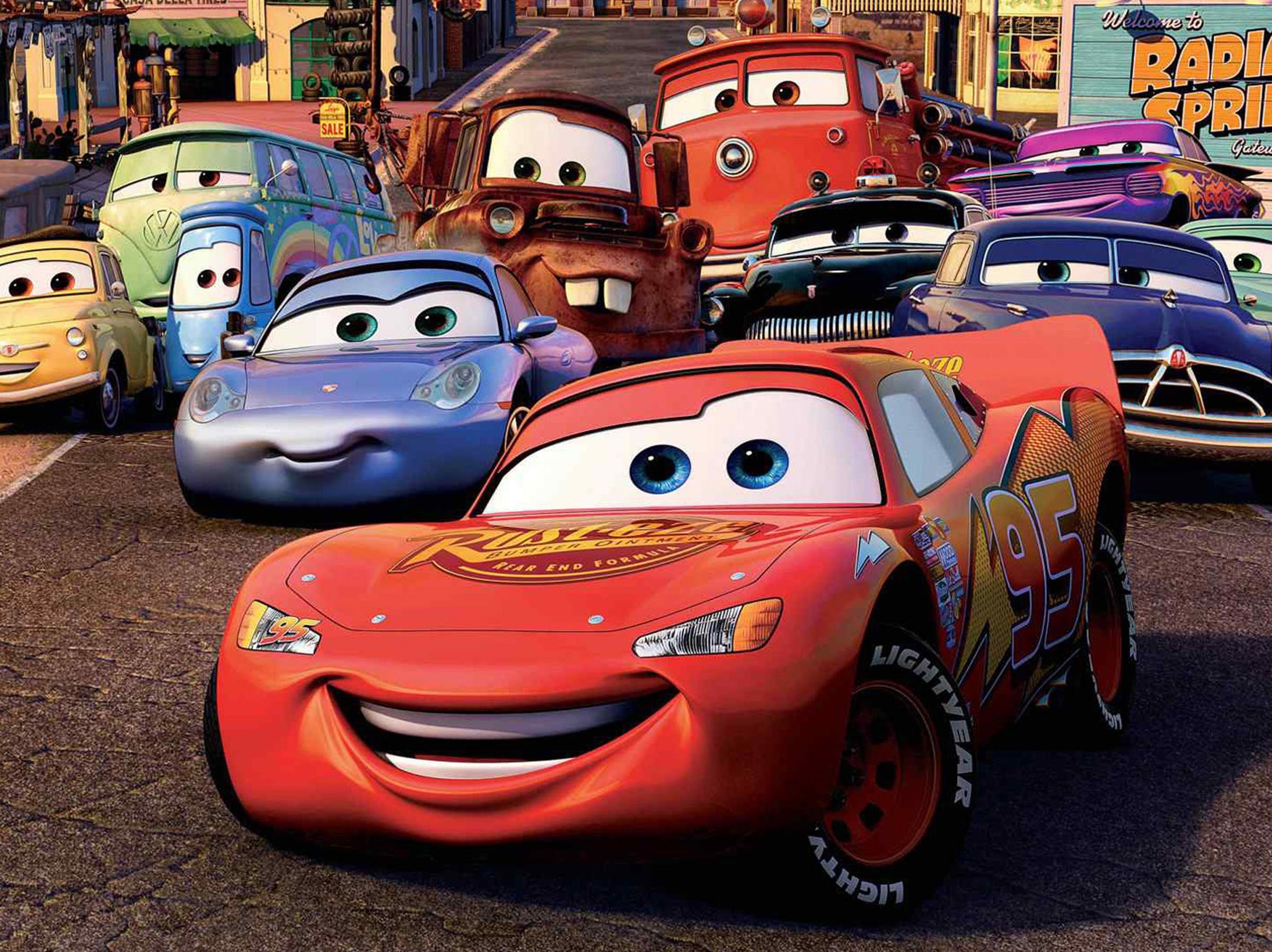
The 1950s stand as an indisputable golden era for the automobile, a decade where innovation converged with unparalleled style to produce some of the most enduring and beloved vehicles in history. Emerging from the shadow of World War II, a period of immense human and industrial recovery, the automotive industry experienced a profound resurgence. Factories, once dedicated to the machinery of war, pivoted to meet the burgeoning civilian demand, fueling a financial boom and an era of widespread optimism, perfectly encapsulated by the vibrant new car designs hitting the roads. This was a time when cars transitioned from mere transportation to potent symbols of identity, independence, and the American Dream, influencing everything from burgeoning rock ‘n’ roll culture to the expansion of suburban life and the iconic drive-in phenomenon.
Automakers, revving up innovation, designed vehicles that simply oozed style, speed, and swagger. Big fins, shiny chrome, and bold curves became the defining characteristics of the era, making a statement whether cruising down Main Street or pulling into a bustling drive-in. While often overshadowed by the muscle car madness of the 1960s, the cars of the 1950s laid crucial groundwork, offering a unique blend of elegance, performance, and groundbreaking technology. These vehicles weren’t just about getting from point A to point B; they were about the experience, the statement, and the sheer joy of driving in an age of progress and flourishing creativity. This collection represents a monumental period where many popular automotive names began to surface, producing models that would achieve legendary status and cement the 1950s as one of the best years in the car world.
We embark on an immersive journey into this remarkable decade, shining a spotlight on a selection of iconic cars that truly defined the automotive landscape. Each model we explore here not only contributed significantly to the technological and stylistic advancements of its time but also left an indelible mark on car culture, influencing future designs and captivating enthusiasts for generations to come. From America’s first sports car to European engineering marvels, these vehicles are a testament to an era where imagination and mechanical prowess merged to create automotive legends.
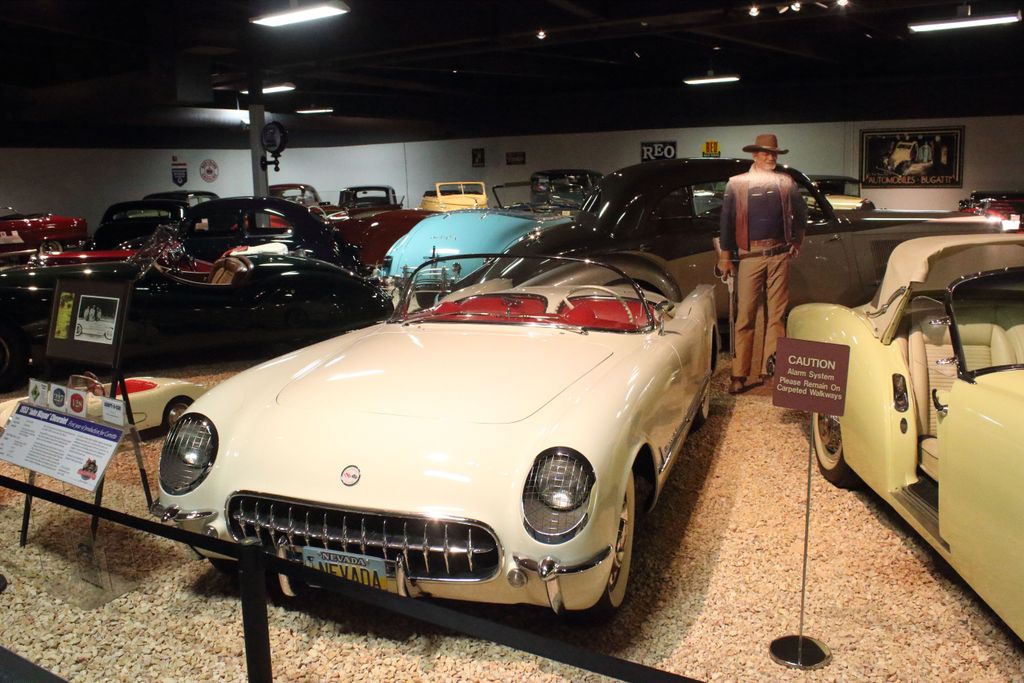
1. 1953 Chevrolet Corvette
The 1953 Chevrolet Corvette represents a monumental moment in American automotive history, marking the ambitious genesis of an enduring sports car legacy. Debuting as a concept at the 1953 GM Motorama, it quickly transitioned to production, a bold statement from Chevrolet that they too could compete in the burgeoning sports car market. What immediately set the Corvette apart was its innovative fiberglass body, a revolutionary material choice for the time that offered advantages in weight and design flexibility, signaling a departure from traditional steel construction.
Underneath its sleek, aerodynamic form, the inaugural Corvette was powered by a 150-horsepower Blue Flame six-cylinder engine, a powerplant that, while not immediately setting performance records, still provided a spirited driving experience. Its distinctive grille and overall design language instantly established an aesthetic that would evolve but remain recognizable through decades. The initial reception, however, was not as overwhelming as general manager Thomas H. Keating had hoped, with limited sales indicating the market was still gauging this new American sports car concept.
Despite its modest initial performance and reception, the Corvette’s introduction was a critical step. With only 300 units produced in its inaugural year, it became a rare and highly sought-after collectible, embodying the very beginning of a storied lineage. This early model, though sometimes overshadowed by later V8-powered iterations, set new standards for design and initiated America’s enduring love affair with its home-grown sports car, laying a crucial foundation for the high-performance legends that would follow.
The vision behind the Corvette was to create a truly American sports car, distinct from its European counterparts, offering a unique blend of style and aspirational performance to the post-war consumer. Its limited production and pioneering use of fiberglass underscore Chevrolet’s forward-thinking approach, even if commercial success was not immediate. Today, this first-generation Corvette is celebrated not just for its rarity, but as the foundational stone of a continuous line of iconic performance vehicles that continue to define American automotive excellence.
Car Model Information: 2004 Chevrolet Corvette Base
Name: Chevrolet Corvette
Caption: 2021 Chevrolet Corvette C8
Manufacturer: Chevrolet
Production: 1953–present
ModelYears: bulleted list
Assembly: bulleted list
Class: Sports car
BodyStyle: coupé
Layout: Front-engine, rear-wheel-drive layout,Rear mid-engine, rear-wheel-drive layout
Categories: 1950s cars, 1960s cars, 1970s cars, 1980s cars, 1990s cars
Summary: The Chevrolet Corvette is a line of American two-door, two-seater sports cars manufactured and marketed by General Motors under the Chevrolet marque since 1953. Throughout eight generations, indicated sequentially as C1 to C8, the Corvette is noted for its performance, distinctive styling, lightweight fiberglass or composite bodywork, and competitive pricing. The Corvette has had domestic mass-produced two-seater competitors fielded by American Motors, Ford, and Chrysler; it is the only one continuously produced by a United States auto manufacturer. It serves as Chevrolet’s halo car.
In 1953, GM executives accepted a suggestion by Myron Scott, then the assistant director of the Public Relations department, to name the company’s new sports car after the corvette, a small, maneuverable warship. Initially, a relatively modest, lightweight 6‑cylinder convertible, subsequent introductions of V8 engines, competitive chassis innovations, and rear mid-engined layout have gradually moved the Corvette upmarket into the supercar class. In 1963, the second generation was introduced in coupe and convertible styles. The first three Corvette generations (1953–1982) employed body-on-frame construction, and since the C4 generation, introduced in 1983 as an early 1984 model, Corvettes have used GM’s unibody Y‑body platform. All Corvettes used front mid-engine configuration for seven generations, through 2019, and transitioned to a rear mid-engined layout with the C8 generation.
Initially manufactured in Flint, Michigan, and St. Louis, Missouri, the Corvette has been produced in Bowling Green, Kentucky, since 1981, which is also the location of the National Corvette Museum. The Corvette has become widely known as “America’s Sports Car.” Automotive News wrote that after being featured in the early 1960s television show Route 66, “the Corvette became synonymous with freedom and adventure,” ultimately becoming both “the most successful concept car in history and the most popular sports car in history.”
Get more information about: Chevrolet Corvette
Buying a high-performing used car >>>
Brand: Chevrolet Model: Corvette
Price: $23,629 Mileage: 29,579 mi.
Read more about: The Duke’s Ride: An In-Depth Look at John Wayne’s Beloved Pontiac Station Wagons and Iconic Automotive Collection
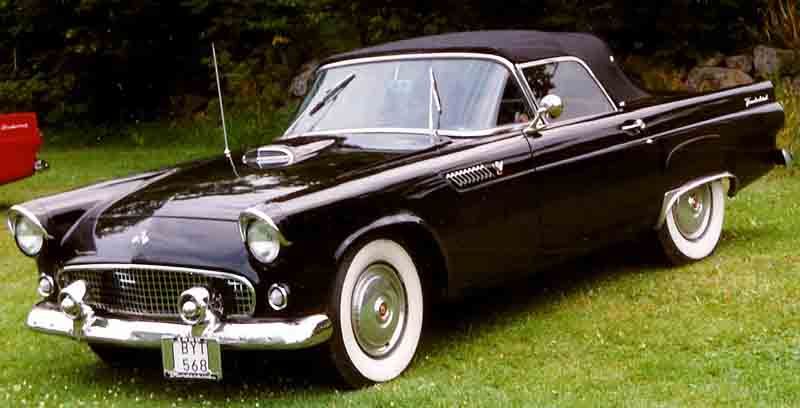
2. 1955 Ford Thunderbird
Ford’s answer to the burgeoning sports car market, and notably to the Chevrolet Corvette, arrived in spectacular fashion with the 1955 Ford Thunderbird. This stylish two-seater roadster quickly carved out its own niche, offering a compelling blend of performance, luxury, and a distinctive American elegance. It wasn’t merely a sports car in the traditional sense, but rather a ‘personal luxury car,’ a segment it largely helped to define, appealing to drivers seeking sophistication alongside spirited driving capabilities.
The Thunderbird immediately captivated with its elegant lines and thoughtful features, demonstrating Ford’s commitment to offering a premium driving experience. It came equipped with a robust 292 cubic inch V8 engine, providing ample power to match its striking aesthetics. Beyond performance, the T-Bird boasted comfort and convenience features that were impressive for its time, including power windows and a versatile removable hardtop, enhancing its appeal as a stylish convertible for diverse driving conditions.
Its debut at Detroit’s 1954 motor show was met with considerable enthusiasm, leading to its subsequent manufacturing and rapid ascent in popularity. The Thunderbird’s competitive pricing further contributed to its success, making a sporty, luxurious American car accessible to a broader audience. This combination of powerful V8 performance, desirable features, and sophisticated styling quickly established the Thunderbird as a cultural icon, symbolizing American automotive ingenuity and the burgeoning desire for expressive personal vehicles in the mid-1950s.
The car’s blend of sportiness with an undeniable sense of class set it apart. With its padded dashboard and other emerging safety features, the Thunderbird also played a subtle role in ushering in a new focus on driver comfort and occupant protection, even within a performance-oriented vehicle. It perfectly exemplified the era’s ambition to infuse everyday driving with a sense of excitement and prestige, remaining a beloved classic and a testament to 1950s design philosophy.
Car Model Information: 2003 Ford Thunderbird
Name: Ford Thunderbird
Caption: 1957 Thunderbird
Manufacturer: Ford Motor Company
Production: unbulleted list
ModelYears: unbulleted list
Class: unbulleted list
Layout: Front-engine, rear-wheel drive layout
Categories: 1960s cars, 1970s cars, 1980s cars, 1990s cars, 2000s cars
Summary: The Ford Thunderbird is a personal luxury car manufactured and marketed by Ford Motor Company for model years 1955 to 2005, with a hiatus from 1998 to 2001.
Ultimately gaining a broadly used colloquial nickname, the T-Bird, the model was introduced as a two-seat convertible, subsequently offered variously in a host of body styles including as a four-seat hardtop coupe, four-seat convertible, five-seat convertible and hardtop, four-door pillared hardtop sedan, six-passenger hardtop coupe, and five-passenger pillared coupe, before returning in its final generation, again as a two-seat convertible.
At its inception, Ford targeted the two-seat Thunderbird as an upscale model. The 1958 model year design introduced a rear seat and arguably marked the expansion of a market segment that came to be known as personal luxury cars, positioned to emphasize comfort and convenience over handling and high-speed performance.
Get more information about: Ford Thunderbird
Buying a high-performing used car >>>
Brand: Ford Model: Thunderbird
Price: $14,500 Mileage: 49,430 mi.
Read more about: Buyer’s Guide: 14 Classic Cars That Are More Pitfall Than Pride, According to Seasoned Automotive Experts
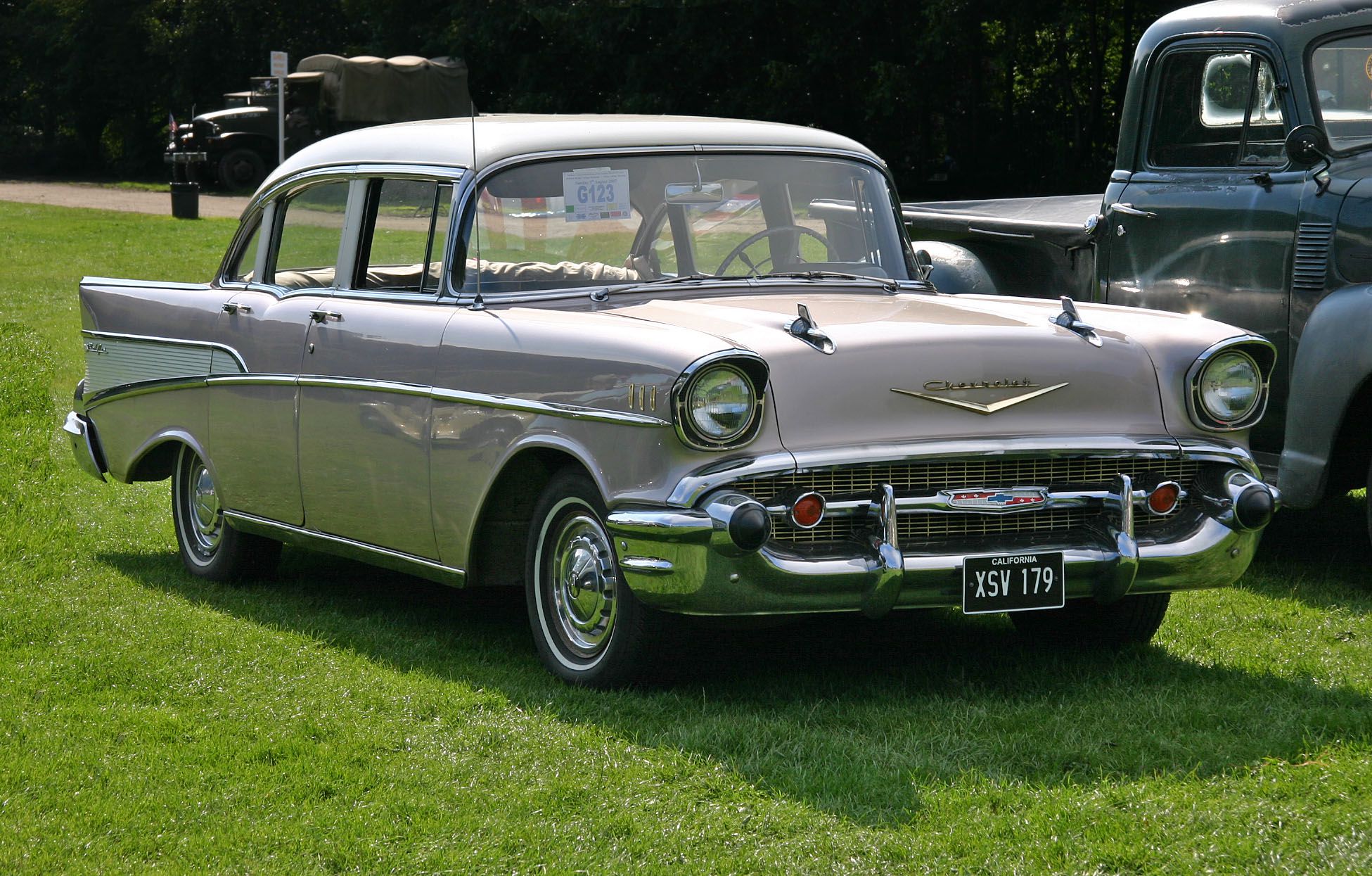
3. 1957 Chevrolet Bel Air
Few cars encapsulate the spirit and aesthetic of the 1950s as perfectly as the 1957 Chevrolet Bel Air, a vehicle that became an instant cultural icon and remains synonymous with post-war American optimism and prosperity. Renowned for its distinctive and often flamboyant design, the Bel Air featured prominent tailfins that soared gracefully from its rear fenders, complemented by an abundance of gleaming chrome accents that adorned its bodywork. These design elements collectively broadcast a sense of futurism and exuberance that was highly appealing to consumers of the era.
Underneath its iconic exterior, the 1957 Bel Air offered a range of powerful V8 engine options, cementing its reputation not just as a style statement, but as a capable performer. The combination of its potent engines and eye-catching design made it a dream car for suburban America, equally adored by families for its roomy interior and by teenagers for its undeniable ‘cool factor.’ Its two-tone paint schemes and gleaming trim pieces further amplified its visual appeal, making it an unmistakable presence on the roads.
The Bel Air’s widespread popularity cemented its status as an icon of car manufacture, although it had undergone a rebranding from its initial iteration as the Deluxe Styline before truly taking off. Its distinctive egg-crate grille, coupled with those unmistakable long tail fins, became what many would consider the quintessential Chevy look, a design language that has resonated through the decades and made it a favorite among collectors today for its vintage charm.
The car symbolized a nation celebrating newfound affluence and looking confidently towards the future. It combined comfort with modern styling, offering features like power steering to enhance the driving experience. The 1957 Chevrolet Bel Air wasn’t just a car; it was a representation of an entire decade, an automotive masterpiece that continues to be celebrated for its enduring design and its profound impact on American culture, reflecting a time when cars truly moved a nation.
Car Model Information: 2023 Buick Envision Preferred
Name: Chevrolet Bel Air
Caption: 1957 Chevrolet Bel Air convertible
Manufacturer: Chevrolet
Production: 1949–1980
ModelYears: 1950–1981
Class: Full-size
Layout: FR layout
Predecessor: Chevrolet Fleetline,Chevrolet Biscayne
Successor: Chevrolet Impala
Categories: 1950s cars, 1960s cars, 1970s cars, 1980s cars, Articles with short description
Summary: The Chevrolet Bel Air is a full-size car produced by Chevrolet for the 1950–1981 model years. Initially, only the two-door hardtops in the Chevrolet model range were designated with the Bel Air name from 1950 to 1952. With the 1953 model year, the Bel Air name was changed from a designation for a unique body shape to a premium level of trim applied across a number of body styles. The Bel Air continued with various other trim level designations, and it had gone from a mid-level trim car to a budget fleet sedan when U.S. production ceased in 1975. Production continued in Canada, for its home market only, through the 1981 model year.
Get more information about: Chevrolet Bel Air
Buying a high-performing used car >>>
Brand: Chevrolet Model: Bel Air
Price: $20,221 Mileage: 46,554 mi.
Read more about: The Duke’s Ride: An In-Depth Look at John Wayne’s Beloved Pontiac Station Wagons and Iconic Automotive Collection
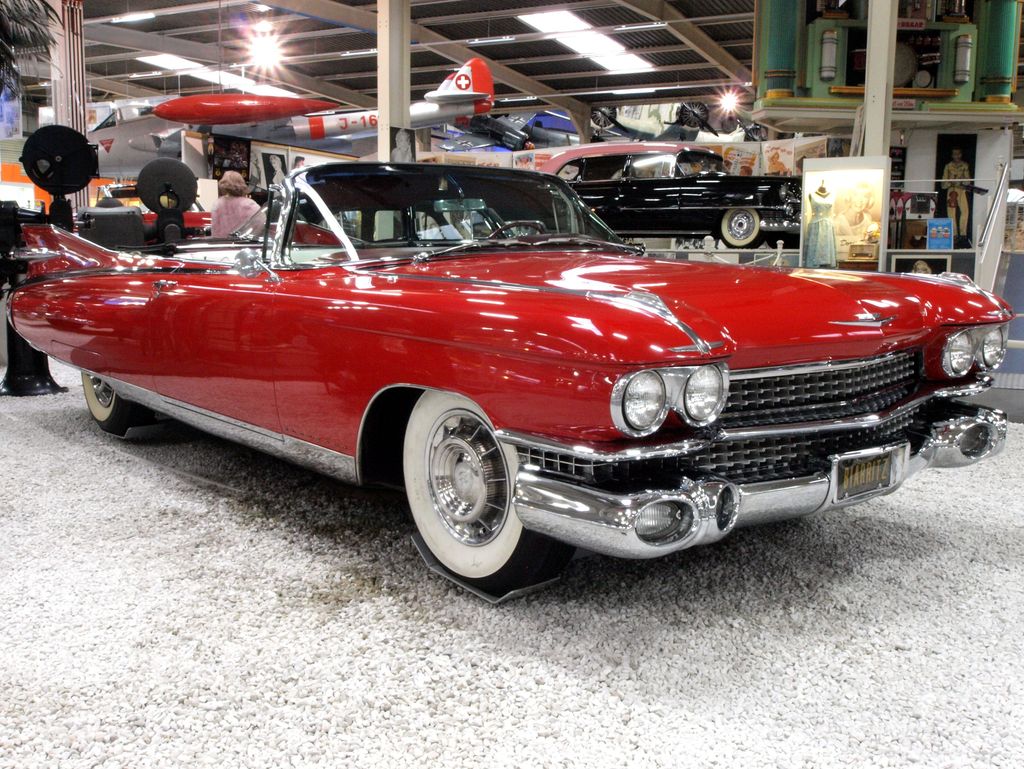
4. 1959 Cadillac Eldorado
The 1959 Cadillac Eldorado stands as a monumental testament to the sheer opulence and dramatic styling that defined American luxury automobiles in the late 1950s. This vehicle wasn’t just a car; it was a rolling sculpture, famous for its massive, sky-high tailfins that soared heavenward, capped with distinctive bullet tail lights that seemed to pierce the air. Its design was a bold, almost theatrical declaration, instantly turning heads and embodying the height of automotive extravagance during its time.
Beyond its striking, almost outrageous exterior, the Eldorado was a marvel of luxurious appointments and advanced features. It offered power everything, from windows to seats, and came equipped with a formidable 345-horsepower V8 engine under the hood, ensuring performance matched its grandiose appearance. Features like air suspension, fine leather seats, and automatic transmission were not just options but expectations in a vehicle designed to signify the pinnacle of prestige and comfort.
As the pinnacle of Cadillac’s offerings, the Eldorado symbolized living the future, wrapped in chrome and Cadillac class. Its elongated body, conical Dagmar bumpers, and white wall tires all contributed to an aesthetic that made it one of the most expensive and aspirational cars Cadillac had ever made. This was a car for those who truly wanted to stand out, a bold expression of success and modern American ambition.
Its curvaceous lines, combined with those exaggerated fins and extensive chrome, made the 1959 Eldorado one of the most impressive car designs ever created, especially within the context of the 1950s’ space-age design obsession. Owning an Eldorado was more than just owning a car; it was possessing a piece of art, a symbol of unparalleled American luxury and design daring, influencing countless designs that followed and securing its place as an unforgettable icon of the automotive world.
Car Model Information: 1976 Cadillac Eldorado Convertible
Caption: 1963 Cadillac Eldorado Convertible
Name: Cadillac Eldorado
Manufacturer: Cadillac
Production: 1952–2002
Layout: Front-engine, rear-wheel-drive layout
Aka: Cadillac Fleetwood Eldorado
Class: Personal luxury car
Successor: Cadillac CTS
Categories: 1960s cars, 1970s cars, 1980s cars, 1990s cars, 2000s cars
Summary: The Cadillac Eldorado is a luxury car manufactured and marketed by the Cadillac Motor Car Division of General Motors from 1952 until 2002, over twelve generations.
The Eldorado was at or near the top of the Cadillac product line. The original 1953 Eldorado convertible and the Eldorado Brougham models of 1957–1960 had distinct bodyshells and were the most expensive models offered by Cadillac during those years. The Eldorado was never less than second in price after the Cadillac Series 75 limousine until 1966. Beginning in 1967, the Eldorado retained its premium position in the Cadillac price structure, but was manufactured in high volumes on a unique, two-door personal luxury car platform.
The Eldorado carried the Fleetwood designation from 1965 through 1972, and was seen as a modern revival of the pre-war Cadillac V-12 and Cadillac V-16 roadsters and convertibles.
Get more information about: Cadillac Eldorado
Buying a high-performing used car >>>
Brand: Cadillac Model: Eldorado
Price: $29,499 Mileage: 31,898 mi.
Read more about: Unearthing Automotive Gold: 10 Jaw-Dropping ’70s Muscle Cars You Can Still Own for a Steal

5. 1951 Hudson Hornet
The 1951 Hudson Hornet was a formidable force in the automotive world, carving out a legendary reputation not just on the streets but, more notably, on the stock car racing circuits. What set the Hornet apart and allowed it to dominate was its revolutionary “step-down” design, an innovative chassis that lowered the car’s center of gravity. This unique construction provided superior handling and a lower stance, giving drivers a sportier feel and significantly improved cornering capabilities, making it a true beast on the track.
Powering this racing champion was the formidable Twin H-Power straight-six engine, a unit that delivered impressive performance for its time. This powerful engine, combined with the Hornet’s advanced chassis, made it a dominant force in NASCAR, winning numerous races and championships. The Hornet was so effective that it single-handedly challenged the traditional powerhouses of American automotive manufacturing, proving that intelligent design could indeed outrun sheer horsepower.
While excelling in racing, the Hudson Hornet also offered an affordable alternative to other performance cars of its era, making high-performance driving accessible to a wider audience. Its low, wide, and fast profile made it a stunner on the street as well, appealing to those who sought both style and substance. The car’s distinctiveness and prowess ensured its popularity, with over 40,000 units sold during its relatively short six-year production run between 1951 and 1957.
Such is its iconic status that the Hudson Hornet has been further immortalized in popular culture, notably as the character Doc Hudson in the animated movie series Cars. This cinematic tribute underscores its lasting impact and recognition as a true automotive legend. The Hornet was a shining example of engineering ingenuity and competitive spirit, leaving an indelible mark on both racing history and the broader automotive landscape of the 1950s.
Car Model Information: 1953 Hudson Hornet NASCAR Tribute
Caption: 1951 Hudson Hornet (4-door sedan)
Manufacturer: Hudson Motor Car Company,American Motors Corporation
Production: 1950–1957
Class: Full-size car,Muscle car
Layout: Front-engine, rear-wheel-drive layout
Name: Hudson Hornet
Categories: AMC vehicles, All accuracy disputes, All articles with dead external links, All articles with unsourced statements, Articles with dead external links from August 2024
Summary: The Hudson Hornet is a full-size car manufactured by Hudson Motor Car Company of Detroit, Michigan from 1951 until 1954, when Nash-Kelvinator and Hudson merged to form American Motors Corporation (AMC). Hudson automobiles continued to be marketed under the Hudson brand name through the 1957 model year.
The first-generation Hudson Hornets featured a functional “step-down” design with dropped floor pan and a chassis with a lower center of gravity than contemporary vehicles that helped the car handle well — an advantage for racing. The Hornet’s lower and sleeker look was accentuated by streamlined styling, sometimes called “ponton” styling.
Following the merger forming AMC in 1954, Hudson cars were built on the newer factory assembly line for Nash Statesman/Ambassador unibody chassis; therefore, all second-generation Hudson Hornets were restyled Nash automobiles that were badge engineered as Hudsons.
Get more information about: Hudson Hornet
Buying a high-performing used car >>>
Brand: Hudson Model: Hornet
Price: $64,000 Mileage: 22,072 mi.
Read more about: The Road Less Traveled (and Valued): 14 Classic Cars That Are Now Worth Less Than You Think

6. 1955 Mercedes-Benz 300SL Gullwing
The 1955 Mercedes-Benz 300SL Gullwing stands as an automotive masterpiece, a car celebrated globally for its stunning design, groundbreaking engineering, and a legendary status that has only grown with time. Its most instantly recognizable feature, the distinctive upward-opening ‘gullwing’ doors, was not merely a stylistic flourish but a functional necessity, dictated by the car’s innovative tubular spaceframe chassis which made conventional doors impractical. This unique design choice immediately set the 300SL apart, making it one of the most visually arresting vehicles ever produced.
Beneath its curvaceous, aerodynamic body, the Gullwing was a technological tour de force. It featured a revolutionary fuel-injected inline-six engine, a pioneering innovation that delivered exceptional performance and efficiency for its time. This cutting-edge powerplant, combined with the car’s lightweight construction and advanced chassis, contributed to its reputation as one of the fastest production cars of its era, capable of reaching speeds well over 150 mph.
The 300SL’s blend of aesthetic brilliance and unparalleled performance made it an instant sensation, captivating car enthusiasts and collectors worldwide. It wasn’t just a sports car; it was a statement of engineering prowess and design excellence, pushing the boundaries of what was thought possible in automotive manufacturing. The meticulous craftsmanship and attention to detail were evident in every aspect of the vehicle, solidifying Mercedes-Benz’s reputation for luxury and precision engineering.
Today, the 1955 Mercedes-Benz 300SL Gullwing remains one of the most desirable and collectible cars of all time, with examples fetching astronomical prices at auction. Its timeless design, coupled with its historical significance and engineering innovations, ensures its place in the pantheon of automotive legends. It is a car that truly combined cutting-edge technology with breathtaking design, influencing generations of sports cars and continuing to inspire awe in all who behold it.
Continuing our journey through the illustrious automotive landscape of the 1950s, we now turn our attention to the vehicles that further pushed the boundaries of performance, luxury, and design in the latter half of this iconic decade. This collection of cars solidified the era’s reputation for mechanical ingenuity and aspirational styling, leaving an indelible mark on history. Each model presented here offers a unique glimpse into the evolving aspirations of car enthusiasts and manufacturers, showcasing a blend of raw power, refined elegance, and visionary engineering that continues to captivate.
Read more about: Revving Up Nostalgia: 14 Vintage ’60s Cars That Are Now Every Collector’s Gold Mine for Enthusiasts

7. 1955 Chrysler C-300
As we delve deeper into the 1950s, the automotive landscape began to shift, laying the groundwork for what would become an era of unparalleled performance. Stepping into this spotlight was the formidable 1955 Chrysler C-300, a vehicle widely hailed by many as America’s very first muscle car. This wasn’t merely a moniker; it was a powerful declaration, thanks in large part to its heart: a potent 300-horsepower HEMI V8 engine that redefined what was possible for a production car of its time. The C-300 wasn’t just fast; it was a force of nature.
The C-300’s impact wasn’t limited to the streets; it quickly established a formidable presence on the NASCAR circuits, dominating races and proving its engineering prowess where it mattered most. Its understated yet purposeful design, unlike the flamboyant chrome and fins that would soon become ubiquitous, hinted at the serious power lurking beneath its sleek exterior. This purposeful aesthetic, devoid of unnecessary adornments, resonated deeply with racers and gearheads who prioritized raw performance and engineering integrity above all else.
Inside, the C-300 offered a focused, no-nonsense experience. Drivers were treated to plush leather bucket seats, an unusual luxury in a performance-oriented machine, paired with a dashboard that emphasized function over excessive ornamentation. Every detail of this car, from its powerful engine to its refined interior, confidently communicated a message of power, prestige, and a clear intent to dominate. It irrevocably set the tone for Chrysler’s legendary performance legacy, proving that American manufacturers could deliver both luxury and earth-shattering speed.
Car Model Information: 2020 Chrysler 300 Touring
Name: Chrysler 300 letter series
Caption: 1964 Chrysler 300-K Coupe
Class: Personal luxury car,Muscle car,Grand tourer
Manufacturer: Chrysler Corporation
Production: 1955–1965,1970
Assembly: Detroit,Michigan
Layout: Front-engine, rear-wheel-drive layout
Predecessor: Chrysler Saratoga
Successor: Chrysler 300 non-letter series
Categories: 1950s cars, 1960s cars, All Wikipedia articles written in American English, All articles containing potentially dated statements, All articles with unsourced statements
Summary: The Chrysler 300 “letter series” are high-performance personal luxury cars that were built by Chrysler in the U.S. from 1955 to 1965 and were a sub-model from the Chrysler New Yorker. After the initial year, which was named C-300 for its standard 300 hp (220 kW) 331 cu in (5.4 L) FirePower V8, the 1956 cars were designated 300B. Successive model years were given the next letter of the alphabet as a suffix (skipping “i”), reaching the 300L by 1965, after which the model sequence was discontinued while the “300” remained. At its introduction it was advertised as “America’s Most Powerful Car”.
The 300 “letter series” cars were among the vehicles built by Chrysler after World War II that focused on performance, and thus can be considered the beginning of the muscle car, though full-sized and more expensive. Chrysler had a long history of producing race car products going back to the Chrysler Six that was entered in the 1925 24 Hours of Le Mans, 1928 24 Hours of Le Mans, 1929 24 Hours of Le Mans, and the Chrysler Imperial Eight roadster in the 1931 24 Hours of Le Mans. The 1955 C-300 and the 1956 300B were raced with very little modification at NASCAR races to include Watkins Glen International where it won races multiple times.
The automaker reintroduced the 300 designations again for performance-luxury sedans in 1999, using the 300M nameplate from 1999 to 2004, and expanding the 300 series with a reintroduction of a new Hemi-engineered V8 installed in the 300C, the top model of a new Chrysler 300 line, a new rear-wheel drive car launched in 2004 for the 2005 model year.
Get more information about: Chrysler 300 letter series
Buying a high-performing used car >>>
Brand: Chrysler Model: C-300
Price: $19,489 Mileage: 66,337 mi.
Read more about: The Unbridled Twelve: 1970s Muscle Cars That Still Reign Supreme for Today’s True Enthusiasts

8. 1950 Oldsmobile Rocket 88
Before the term ‘muscle car’ fully entered the automotive lexicon, there were pioneers, and among them stood the revolutionary 1950 Oldsmobile Rocket 88. This groundbreaking model didn’t just push boundaries; it shattered them with the introduction of its powerful Rocket V8 engine, an innovation that single-handedly established new benchmarks for performance and outright speed in a family car. It was an engine that promised thrilling acceleration and a driving experience unlike any other.
The genius of the Rocket 88 lay in its potent combination of a lightweight body and that high-output engine. This pairing created a vehicle that was not only incredibly agile but also remarkably fast, instantly making it a firm favorite among the burgeoning hot-rodding culture of the era. This wasn’t just a car; it was a statement, a canvas for enthusiasts to further enhance and personalize, marking a significant milestone in automotive history by bringing high performance to the masses.
Indeed, some historians credit the Rocket 88 as the very first true muscle car, a testament to its unparalleled blend of speed and power. It could effortlessly reach speeds of 100 mph, an exhilarating and almost unbelievable feat for its time, captivating drivers and onlookers alike. Its influence even permeated popular culture, with rock and roll fans singing its praises, solidifying its status as an icon. The Rocket 88 undeniably made everyday cars exciting, paving a crucial path for the future performance models that would follow in its tire tracks.
Car Model Information: 2023 Buick Envision Preferred
Name: Oldsmobile 88
Caption: 1996 Oldsmobile Eighty Eight LS
Manufacturer: Oldsmobile
ModelYears: 1949–1999
Class: Full-size car
Layout: FR layout
Predecessor: Oldsmobile L-Series
Successor: Oldsmobile Aurora
Categories: 1940s cars, 1950s cars, 1960s cars, 1970s cars, 1980s cars
Summary: The Oldsmobile 88 (marketed from 1989 on as the Eighty Eight) is a full-size car that was produced by the Oldsmobile Division of GM from 1949 until 1999. From 1950 until 1974, the 88 was the division’s most popular line, particularly the entry-level models such as the 88 and Dynamic 88. The 88 series was also an image leader for Oldsmobile, particularly in the model’s early years (1949–51), when it was one of the best-performing automobiles, thanks to its relatively small size, light weight, and advanced overhead-valve high-compression V8 engine. This engine, originally designed for the larger and more luxurious C-bodied 98 series, also replaced the straight-8 on the smaller B-bodied 78. With the large, high performance Oldsmobile Rocket V8, the early Oldsmobile 88 is considered by some to be the first muscle car.
Naming conventions used by GM since the 1910s for all divisions used alphanumeric designations that changed every year. Starting after the war, Oldsmobile changed their designations and standardized them so that the first number signified the chassis platform, while the second number signified how many cylinders. A large number of variations in nomenclature were seen over this long model run — Super, Golden Rocket, Dynamic, Jetstar, Delta, Delmont, Starfire, Holiday, LS, LSS, Celebrity, and Royale were used at various times with the 88 badge, and Fiesta appeared on some station wagons in the 1950s and 1960s. The name was more commonly shown as numerals in the earlier years (“Delta 88”, for example) and was changed to spell out “Eighty Eight” starting in 1989.
Get more information about: Oldsmobile 88
Buying a high-performing used car >>>
Brand: Oldsmobile Model: Rocket 88
Price: $20,221 Mileage: 46,554 mi.
Read more about: Unleash the Beasts: The Most Popular Classic Muscle Cars That Defined the ’60s and ’70s Golden Era

9. 1954 Kaiser Darrin
In an era often defined by burgeoning tailfins and lavish chrome, the 1954 Kaiser Darrin dared to be different, emerging as an unconventional design experiment that truly challenged automotive conventions. This innovative roadster immediately captivated with its unique sliding doors, a truly visionary feature that seamlessly disappeared into the front fenders, presenting an exceptionally clean and uncluttered profile. It was a bold statement, showcasing a forward-thinking approach to automotive design and functionality.
Crafted with a lightweight fiberglass body, the Kaiser Darrin stood as one of the first American sports cars to embrace this revolutionary material, putting it in direct competition with the early iterations of the Chevrolet Corvette. The car’s distinctive aesthetic was the brainchild of the renowned stylist Howard “Dutch” Darrin, who endowed it with a striking long nose, a unique grille that set it apart from its contemporaries, and an elegant soft top roof that completed its refined silhouette. Every curve and line spoke of artistic intent.
While only a limited number of these extraordinary vehicles were ever produced, the Kaiser Darrin nonetheless left an indelible impression on the automotive world. Its audacious design and innovative features cemented its legacy as a creative and gutsy newcomer, proving that imagination and a willingness to break from tradition could still carve out a significant niche in a rapidly evolving market. It remains a fascinating testament to mid-century American design daring.
Read more about: Beyond the Chrome: Unearthing 12 of the Rarest Hidden Gems of 1950s American Automotive History
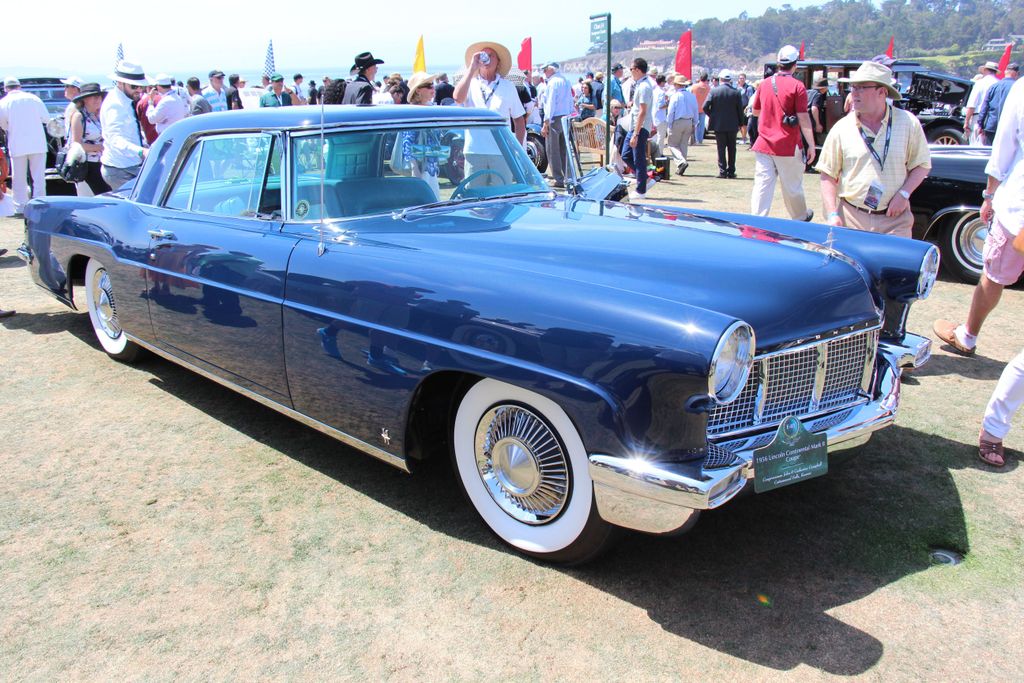
10. 1956 Lincoln Continental Mark II
For those who sought the absolute pinnacle of American bespoke luxury in the 1950s, the 1956 Lincoln Continental Mark II presented itself as the undisputed answer. This was not merely a car but an exquisitely crafted statement of unparalleled sophistication and exclusivity, instantly becoming a favorite among the elite, from celebrities to prominent CEOs. Its design philosophy was one of understated elegance, a stark contrast to the flamboyant exuberance dominating much of the era’s automotive styling.
The Mark II represented Ford’s ambitious endeavor to challenge and even surpass the likes of Rolls-Royce in the ultra-luxury segment. Every single unit was meticulously hand-built, a testament to its extraordinary craftsmanship and an uncompromising attention to detail that set it apart. From its lavish fine leather interior to its restrained, classically beautiful exterior, every element was carefully considered and executed to perfection. It was an exercise in automotive refinement that remains unmatched by many of its American contemporaries.
With a production run limited to a mere 3,000 units, the Continental Mark II brought a level of refinement and bespoke quality that was largely unprecedented for the American consumer. It boasted advanced features such as air conditioning and a sophisticated stereo system, all powered by a hefty 6.0-liter V8 engine capable of delivering a robust 300 horsepower. This exquisite craftsmanship, while ensuring its uniqueness, also meant a very high cost of acquisition, making it a vehicle reserved for the most discerning and affluent buyers, further solidifying its legendary status as one of the most refined American cars ever built.
Car Model Information: 2023 Buick Envision Preferred
Caption: 1956 Continental Mark II
Predecessor: Lincoln Continental#First generation (1940–1942, 1946–1948)
Successor: Lincoln Continental Mark III,Lincoln Continental#Third generation (1958–1960)
Name: Continental Mark II
ModelYears: 1956–1957
Manufacturer: Ford Motor Company
Assembly: Ford Pilot Plant,Allen Park, Michigan
Related: Lincoln Futura
Layout: Front-engine, rear-wheel-drive layout
BodyStyle: hardtop
Engine: 368 cuin
Abbr: on
Transmission: Turbo-Drive 3-speed automatic
Wheelbase: 126.0 in
Length: 218.4 in
Width: 77.5 in
Height: 56.3 in
Weight: 5000 lb
Designer: John Reinhart (1953)
Categories: Articles with short description, Cars discontinued in 1957, Cars introduced in 1956, Commons category link from Wikidata, Ford Motor Company marques
Summary: The Continental Mark II is an ultra-luxury coupé that was sold by the Continental Division of Ford for the 1956 and 1957 model years. The first (and only) product line of Continental, the Mark II was developed as the worldwide flagship vehicle of Ford Motor Company. Developed as a successor for the 1939–1948 Lincoln Continental, the Mark II derived its nameplate from European manufacturing practice, denoting a second generation of the model family; Ford would later use this nomenclature for the Mark Series of flagship personal luxury cars.
As the most expensive American-produced automobile of the time, the Mark II was marketed against the Rolls-Royce Silver Cloud and the Bentley Continental. Produced solely as a two-door hardtop coupe, the Mark II was largely hand-assembled, sourcing its V8 powertrain from the standard Lincoln line.
Following the 1957 model year, the Mark II was discontinued, with the hand-built coupe replaced by a rebranded Lincoln. For 1969, Ford revived the Mark series chronology, debuting the (second) Continental Mark III coupe, leading to five successive generations, ending with the 1998 Lincoln Mark VIII coupe. Alongside its nameplate nomenclature, the Mark II debuted the integrated “Continental” spare-tire trunklid (in place of a bumper-mounted spare tire); each generation of the Mark Series (alongside the 1977–1980 Lincoln Versailles and 1982–1987 Lincoln Continental) used a variation of this feature. The Mark II also debuted the rectangular four-point star emblem, which remains in use on Lincoln-brand vehicles (in modified form) today.
The Mark II was assembled by Ford at Allen Park Body and Assembly in Allen Park, Michigan. Following the discontinuation of the Mark II, the facility was converted to the headquarters of the ill-fated Edsel brand. Today, it remains as the Ford Pilot Plant, where Ford pre-production vehicles are hand-assembled for testing and production development.
Get more information about: Continental Mark II
Buying a high-performing used car >>>
Brand: Lincoln Model: Continental Mark II
Price: $20,221 Mileage: 46,554 mi.
Read more about: The Duke’s Ride: An In-Depth Look at John Wayne’s Beloved Pontiac Station Wagons and Iconic Automotive Collection
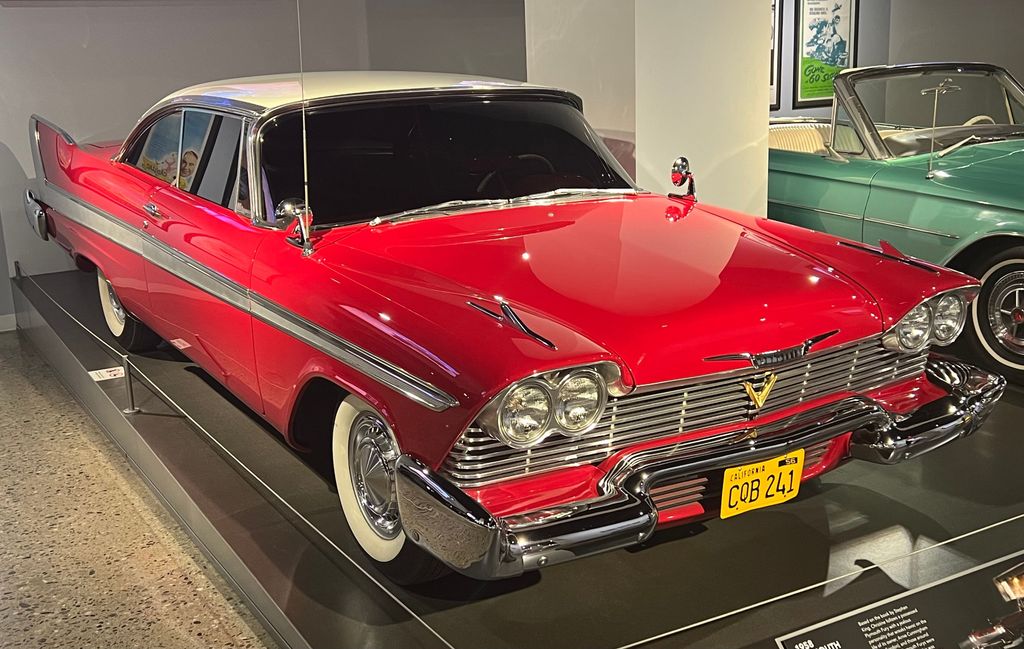
11. 1958 Plymouth Fury
The 1958 Plymouth Fury burst onto the scene with a vibrant personality, instantly captivating with its sleek design and the promise of powerful performance. This was a car that embodied the very spirit of 1950s automotive attitude, becoming an undeniable symbol of American automotive innovation. Its distinctive styling, characterized by sharp tailfins and gleaming golden trim, gave it an appearance of speed and dynamism even when standing perfectly still. It was a visual feast for the eyes.
Before its immortalization in popular culture by Stephen King’s chilling novel “Christine,” the Plymouth Fury was already a celebrated icon on American roads. Its bold aesthetic, coupled with its performance capabilities, made it a highly sought-after vehicle. Under the hood, the Fury packed a serious punch, equipped with the formidable Golden Commando V8 engine and a dual exhaust system that perfectly complemented its aggressive stance and ensured it had the power to match its undeniable swagger.
The Fury was more than just a car; it was a bold expression of style and strength, a testament to Plymouth’s commitment to delivering both form and function in an era of rapid design evolution. Its futuristic styling pushed boundaries, making it a standout model in a decade brimming with memorable automobiles. For those who desired a vehicle that made a statement and delivered an exhilarating driving experience, the 1958 Plymouth Fury was an irresistible choice, cementing its legacy as an unforgettable classic.
Car Model Information: 1973 Plymouth Fury Custom Suburban
Name: Plymouth Fury
Caption: 1959 Plymouth Sport Fury
Manufacturer: Plymouth (automobile)
Aka: Plymouth Sport Fury (1959, 1962–1971),Plymouth VIP (1966–1969)
Production: 1958–1978
ModelYears: 1959–1978
Assembly: bulleted list
Class: Full-size,Mid-size,Full-size,Mid-size,Full-size,Mid-size
Layout: FR layout
Predecessor: Plymouth Belvedere,Plymouth Plaza,Plymouth Savoy
Successor: Plymouth Gran Fury,Plymouth Gran Fury
Sp: us
Categories: 1960s cars, 1970s cars, All articles needing additional references, Articles needing additional references from December 2018, Articles with short description
Summary: The Plymouth Fury is a model of automobile that was produced by Plymouth from 1955 until 1989. It was introduced for the 1956 model year as a sub-series of the Plymouth Belvedere, becoming a separate series one level above the contemporary Belvedere for 1959. The Fury was a full-size car from 1959 until 1961, then a mid-size car from 1962 until 1964, again, a full-size car from 1965 through 1974, and again, a mid-size car from 1975 through 1978. From 1975 until 1977, the Fury was sold alongside the full-size Plymouth Gran Fury. In 1978, the B-body Fury was the largest Plymouth, and by 1979, there was no large Plymouth. This product gap was filled in 1980 with the R-body Gran Fury, followed by the M-body Fury in 1982. Production of the last V8, RWD Plymouth Fury ended at the Kenosha Main assembly plant in Kenosha, WI, on December 23, 1988. Unlike its sibling brand, Dodge, Plymouth would not live to see the resurgence of the large, V8/RWD sedan.
Get more information about: Plymouth Fury
Buying a high-performing used car >>>
Brand: Plymouth Model: Fury
Price: $21,500 Mileage: 91,485 mi.
Read more about: Unearthing Automotive Gold: 10 Jaw-Dropping ’70s Muscle Cars You Can Still Own for a Steal

12. 1959 BMC Mini
As the 1950s drew to a close, a revolutionary compact car emerged from Britain that would completely redefine automotive design and urban mobility: the iconic 1959 BMC Mini. This ingenious vehicle didn’t just shrink the car’s overall footprint; it reimagined it, setting completely different standards for what an “all-day” car could truly be. Many consider it to be one of the most revolutionary cars of all time, a testament to its clever engineering and profound impact.
The Mini’s brilliance lay in its ingenious space-saving layout. By mounting the engine transversely and using front-wheel drive, designers managed to create an incredible amount of interior space for both passengers and luggage within its remarkably small dimensions. This efficient packaging, combined with its short wheelbase and precise steering, endowed the Mini with unbelievably nimble handling and an almost kart-like racing prowess, making it a joy to drive in congested city streets and on winding country roads alike.
Its exceptional handling characteristics and spirited performance quickly made the Mini an excellent choice for a variety of motorsports, excelling on both circuit racing tracks and in grueling rallies across the globe. The sheer scale of its success is astonishing; with more than 5 million units rolling off the production line over several decades, the Mini’s global impact on automotive design and popular culture is immense. It proved that small could indeed be mighty, influencing generations of compact cars and remaining a beloved icon to this day.
Car Model Information: 2024 MINI Hardtop Cooper S
Sp: uk
Caption: 1959 Morris Mini-Minor (first one built)
Name: Mini
Aka: Austin 850,Rover Mini,Austin Cooper,Austin Mini,Austin Partner,Austin Seven,Innocenti Mini,Leyland Mini,Morris 850,Morris Mascot,Morris Mini Minor,Riley Elf,Wolseley 1000 (South Africa),Wolseley Hornet
Layout: Front-engine, front-wheel-drive layout
Manufacturer: British Motor Corporation,British Leyland,Rover Group
Production: 1959–2000 (5.38 million)
Class: City car
BodyStyle: sedan (car),convertible,Station wagon,sedan delivery,coupe utility
Engine: BMC A-series engine,Straight-four engine
Designer: Alec Issigonis,John Sheppard (car designer)
Transmission: 4-speed manual,AP automatic transmission,5-speed manual (optional extra on some later models)
Length: cvt,cvt,cvt
Width: cvt
Height: cvt
Weight: cvt
Wheelbase: cvt,cvt
Related: Mini Moke,Austin Metro,Innocenti Mini,Mini Wildgoose,Mini Marcos
Successor: Austin Metro,Mini Hatch
Assembly: Panmure, New Zealand
Categories: 1960s cars, 1970s cars, 1980s cars, 1990s cars, 2000s cars
Summary: The Mini is a very small two-door, four-seat car, produced for four decades over a single generation, with many names and variants, by the British Motor Corporation (BMC) and its successors British Leyland and the Rover Group, and finally (briefly) under BMW ownership. Minis were built as fastbacks, estates, convertibles, and various other body styles. Minus a brief 1990s hiatus, from 1959 into 2000, an estimated 5.38 million of all variations combined were built, and the Mini’s engines also powered another 2 million Mini Metros, though the Mini eventually outlasted its successor.
Initially, the Mini was marketed under the Austin and Morris names, as the Austin Seven and Morris Mini-Minor; the Austin Seven was renamed Austin Mini in 1962 and Mini became a marque in its own right in 1969. Retrospectively, the car is known as the “Classic Mini” to distinguish it from the modern MINI family of vehicles produced since 2001 by German carmaker BMW, who took ownership of the Mini name following the sale of Rover Group in 2000.
This distinctive two-door car was designed for BMC by Sir Alec Issigonis. Its space-saving transverse engine and front-wheel drive layout – allowing 80% of the area of the car’s floorpan to be used for passengers and luggage – influenced a generation of car makers. The front-wheel-drive, transverse-engine layout were used in many other “supermini” style car designs such as Honda N360 (1967), Nissan Cherry (1970), and Fiat 127 (1971). The layout was also adapted for larger subcompact designs. In 1999, the Mini was voted the second-most influential car of the 20th century, behind the Ford Model T, and ahead of the Citroën DS and Volkswagen Beetle. It is also considered an icon of 1960s British popular culture.
The Mini Mark I had three major UK updates: the Mark II, the Clubman, and the Mark III. Within these was a series of variations, including an estate car, a pick-up, a van, and the Mini Moke, a jeep-like buggy. The performance versions, the Mini Cooper and Cooper “S”, were successful as both race and rally cars, winning the Monte Carlo Rally in 1964, 1965, and 1967. The Mini was manufactured in England at the Longbridge plant in Birmingham located next to BMC’s headquarters and at the former Morris Motors plant at Cowley, as well as in Australia (Victoria Park/Zetland BMC Australia factory) and later also in Spain (Authi), Belgium, Italy (Innocenti, as the Innocenti Mini), Chile, Malta, Portugal, South Africa, Uruguay, Venezuela, and Yugoslavia (IMV). In 1980, British Leyland launched the Mini’s follow-up, the Austin Metro, however the Mini outlasted it and continued to be produced at Longbridge until October 2000.
Get more information about: Mini
Buying a high-performing used car >>>
Brand: BMC Model: Mini
Price: $25,499 Mileage: 10,501 mi.
Read more about: The True Cost of Ownership: 14 Vehicles Known to Relentlessly Drain Your Savings Through Constant Repairs
As we reflect on these twelve extraordinary vehicles, it becomes abundantly clear that the 1950s was far more than just a decade of cars; it was a crucible of automotive creativity and engineering ambition. From the sleek lines of the Chevrolet Corvette to the audacious fins of the Cadillac Eldorado, and from the racing dominance of the Hudson Hornet to the revolutionary compactness of the BMC Mini, each car we’ve explored played a pivotal role in shaping not just the roads we drive on, but the very culture that embraced them. These machines were tangible representations of an era’s dreams, progress, and unwavering optimism, continuing to inspire awe and passion in car enthusiasts and collectors worldwide. They are not merely relics of the past but vibrant testaments to a golden age when every turn of the wheel felt like a step into a thrilling, chrome-plated future.

